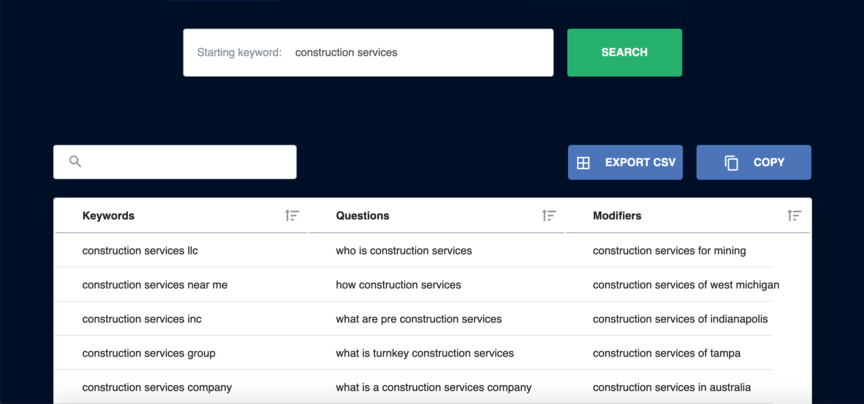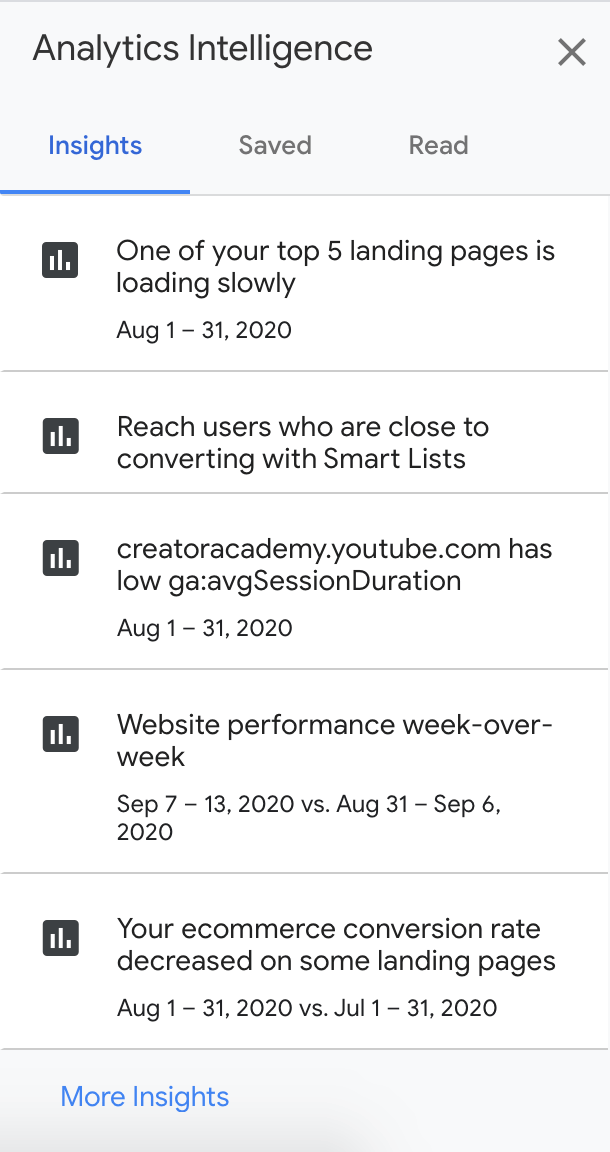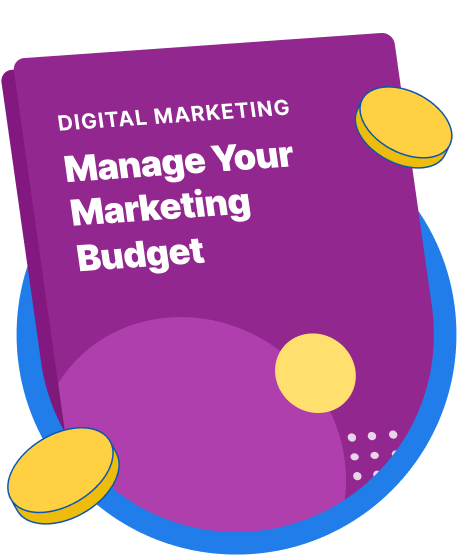-
 6 min. read
6 min. read
-
 Matthew Gibbons
Matthew Gibbons Lead Data & Tech Writer
Lead Data & Tech Writer
- Matthew is a marketing expert focusing on the SEO & martech spaces. He has written over 500 marketing guides and video scripts for the WebFX YouTube channel. When he’s not striving to put out some fresh blog posts and articles, he’s usually fueling his Tolkien obsession or working on miscellaneous creative projects.
If you’re looking to get into content marketing, you’ve probably heard of search engine optimization (SEO). Content marketing involves creating compelling web content to draw users in, but SEO is what gets that content ranking in search results where people can find it. But if you’re not familiar with the process, SEO can seem like a daunting task.
It might seem easy enough to write a piece of content, but the idea of harnessing Google’s algorithms probably sounds complicated. Fortunately, it isn’t. In this post, we’ll walk through a simple on-page SEO checklist that you can use each time you write a piece of content.
Read on to learn more, and then consider partnering with WebFX — the SEO agency with over 28 years of experience — for our top-notch content optimization services! in a variety of industries.We don’t want to tell you about the work we do, we want to SHOW you.
View Our Portfolio 
We’ve built over
Websites
Your introductory SEO content checklist
As intimidating as Google’s algorithms might seem, the steps you can take to optimize your content for them are fairly simple to implement. This on-page SEO checklist will walk you through the 12 steps you should follow for each piece of content you write.
1. Choose a target keyword
When you get ready to write a piece of content, start by figuring out what keyword it will target. Content keywords determine what the content is about, so this needs to be the first step. Make sure the keyword you choose is one you can rank for — preferably a long-tail keyword with moderate to low competition — and that you don’t already have a piece of content ranking for it.
2. Find some related keywords
Once you have the primary target keyword for your piece, find some related content keywords to include. You can do this by using a tool like KeywordsFX or Google Keyword Planner.  Search for your primary keyword in the tool of your choice.
Search for your primary keyword in the tool of your choice.
Then, pick 3–5 related keywords from the results.
3. Determine search intent
Looking at the list of keywords you now have, particularly your target keyword, determine their user search intent. In other words, when users search for those keywords, what information are they looking for? What are they hoping to find in the search results?
Google’s algorithms are smart enough to judge how well pages match search intent, so it’s essential to understand this before you begin writing your content.
4. Research your topic
Now that you know what users are searching for when they look up your target keyword, all you have to do is write a piece of content that provides that. Do some research on the topic you’re writing about before you begin. In particular, make sure you look at what’s already ranking for that keyword.
That will tell you what you can emulate and what you can build on with your content.
5. Write your content
Now it’s time to write! As you craft your content, make sure you keep search intent in mind. Aim to create a piece of content that’s better than anything already out there.
Don’t write in huge blocks of text, either —chunk content for easy readability. Also, include your content keywords in a few different places throughout the piece. Don’t keyword-stuff, either — Google will penalize you for that — but implement each of your keywords at least a few times.
Try to include some keywords in your headings, if possible.
6. Optimize your title tag and URL
This SEO content checklist doesn’t stop at writing a piece. You can still do several more things to improve your content’s SEO even after drafting it. To start with, your content itself isn’t the only place you should incorporate your target keyword.
To further improve your SEO, you can include it in your title tag and URL for that page. Keep the URL as short as you can for an additional boost.
7. Optimize your images
If you include any images in your content, make sure you optimize them for SEO. This means two things: First, don’t upload oversized image files. Compress your images where you can — otherwise, the page load speed will get too big.
Second, use alt text to give the images unique descriptions. This not only helps with accessibility and creates a better user experience, but it also lets Google read your images, so they can contribute to your rankings!
8. Include internal links
Linking to other pages on your site is a great way to contribute to SEO and simultaneously keep users on your website longer. Whenever you see an opportunity to link to other pieces of content, do so. Make sure you use descriptive anchor text as well.
So, if you want to use the sentence “the quick brown fox jumped over the lazy dog” to link to a page about lazy dogs, the anchor text should be “the lazy dog,” not “jumped over.”
9. Pursue backlinks
As valuable as internal links are, backlinks are arguably even better. Google will reward your content significantly if you get enough reputable websites to link to it as a resource. You can acquire these backlinks in a few different ways.
One such way is to guest post on other websites and link to your content from there. You can also reach out directly and ask for them to link to you.
10. Use responsive design
Google ranks pages based on their mobile format, not their desktop format. That means that everything else on this SEO content checklist will be in vain if you don’t use responsive design. For every piece of content you write, check that it looks good in both formats.
11. Ensure fast load speeds
I alluded to this when I talked about image optimization, but you need to make sure your page loads quickly. Most users expect pages to load within two seconds, so you don’t want your page to be the one that doesn’t. You can optimize for this in a few different ways.
As stated earlier, make sure you compress your images. You can also cache your website pages and put script references at the bottom.
12. Analyze your page with Google tools
It can be hard to know if your page is optimized without having a means of analyzing it. Fortunately, Google provides some free tools that allow you to do this. Google Analytics, Google Search Console, and Lighthouse allow you to view various site metrics related to page speed, website traffic, and more.
 You can also use WebFX’s free SEO Checker to audit your website’s on-page and off-page SEO in under a minute.
You can also use WebFX’s free SEO Checker to audit your website’s on-page and off-page SEO in under a minute.
Content optimization services from WebFX
This on-page SEO checklist can go a long way for boosting your content SEO. But SEO still has plenty of nuances to it that can be tricky to figure out. If you’re uncertain about making each of the steps on this list work for you, WebFX can help.
With over 1,100 client testimonials, our content optimization services are some of the most trusted in the digital marketing industry. We can do everything on this list — and more — to get your web content ranking in the top search results. To get started with us, just call us at 888-601-5359 or contact us online today!
-
 Matthew is a marketing expert focusing on the SEO & martech spaces. He has written over 500 marketing guides and video scripts for the WebFX YouTube channel. When he’s not striving to put out some fresh blog posts and articles, he’s usually fueling his Tolkien obsession or working on miscellaneous creative projects.
Matthew is a marketing expert focusing on the SEO & martech spaces. He has written over 500 marketing guides and video scripts for the WebFX YouTube channel. When he’s not striving to put out some fresh blog posts and articles, he’s usually fueling his Tolkien obsession or working on miscellaneous creative projects. -

WebFX is a full-service marketing agency with 1,100+ client reviews and a 4.9-star rating on Clutch! Find out how our expert team and revenue-accelerating tech can drive results for you! Learn more
Try our free Marketing Calculator
Craft a tailored online marketing strategy! Utilize our free Internet marketing calculator for a custom plan based on your location, reach, timeframe, and budget.
Plan Your Marketing Budget

Maximize Your Marketing ROI
Claim your free eBook packed with proven strategies to boost your marketing efforts.
Get the GuideTry our free Marketing Calculator
Craft a tailored online marketing strategy! Utilize our free Internet marketing calculator for a custom plan based on your location, reach, timeframe, and budget.
Plan Your Marketing Budget





